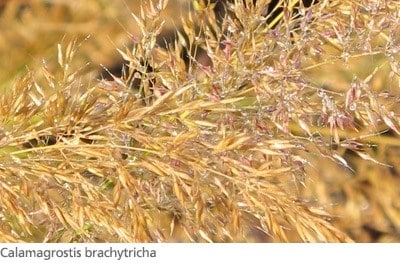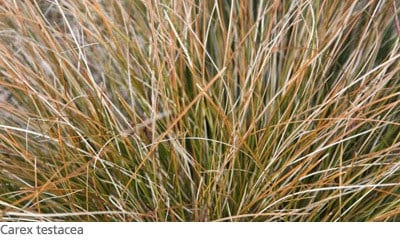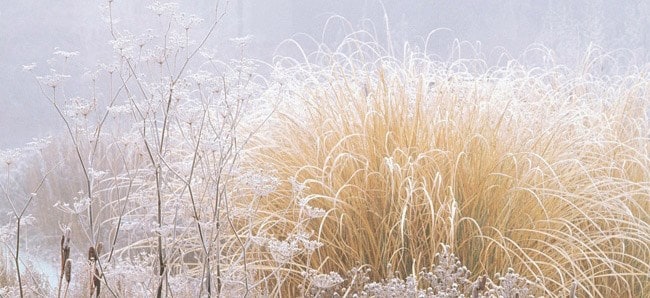|
Some plants may be too generous with their seeds, but most can be safely left to form and when covered in a gossamer of trembling cobwebs, weighed down with glistening dewdrops and catching the autumn light, the garden is a magical place. When winter finally arrives those spiders and other tiny beasties will make good use of any seed heads, using them as shelter, so leaving some of them intact not only looks lovely, it’s extremely eco-friendly too.
Grasses add profile and movement so they should always be planted in a light position preferably one that catches midday sun. As the days shorten the awns break up and become almost transparent, taking on a silvery patina as they age. They appear to shimmer, making a perfect foil for jewel-box, late-autumn flowers including asters and their close relative, the tall purple ironweed Vernonia arkansana 'Mammuth'. Garden worthy grasses don’t run or become invasive by self-seeding, but the trick is to pick the right grass for your situation. Then find some partners of a similar height, to avoid a little and large look.
Shorter Grasses with Perennials to Match

Calamagrostis brachytricha, a curtseying grass with feathery awns that open to light mauve before fading to silver-brown, is a seasonal highlight this month. Use it with shorter cool-toned purple and pink asters such as Aster × frikartii 'Mönch'. It doesn’t seed, keeps a tight clump, flowers now and it’s versatile too. It can tumble over a low stone wall with grace, or occupy a shadier niche - yet still flower well. The Korean feather grass, to use its common name, definitely looks best catching the light however.
 Good perennial partners could include Sedum ‘Purple Emperor’, a dark-leaved beauty with perfectly crimped foliage. Ruby-red, bee-pleasing flowers appear by August, but keep their colour for weeks, before forming dark-chocolate seed heads that endure until the end of the year. It’s one of the best sedums because it doesn’t divide and flop after a year or so: it stays in a neat clump and the foliage is dark from the moment it emerges. Good perennial partners could include Sedum ‘Purple Emperor’, a dark-leaved beauty with perfectly crimped foliage. Ruby-red, bee-pleasing flowers appear by August, but keep their colour for weeks, before forming dark-chocolate seed heads that endure until the end of the year. It’s one of the best sedums because it doesn’t divide and flop after a year or so: it stays in a neat clump and the foliage is dark from the moment it emerges.
A meatier sedum, with plump erect stems and large wavy-edged leaves in pigeon-breast grey is ‘Matrona’. This matronly sedum, like a middle-aged woman with a pinny and rolling pin, produces pearl-pink, bee-friendly flowers that are perfect with dusky pink diascias. Its strong stance is pleasing throughout winter. Both of these recent sedums were chance seedlings noticed by sharp-eyed nurserymen. ‘Matrona’ was spotted by Ewald Hugen of Freiburg in Germany and ‘Purple Emperor’ by Graham Gough in England. However did we manage without them!

Shorter fine-tined grass-like plants don’t tend to produce showy flowers. Instead their leaves spiral round in the wind, constantly moving and twining through perennials as they go. The orange-toned Carex testacea has a year-long presence and it’s hardy. Stipa tenuissima produces tactile, hair-like strands in bright-green early in the year. These fade to harvest-gold and have earned it the common name of ponytail grass. Both grasses look wonderful in winter.
|







